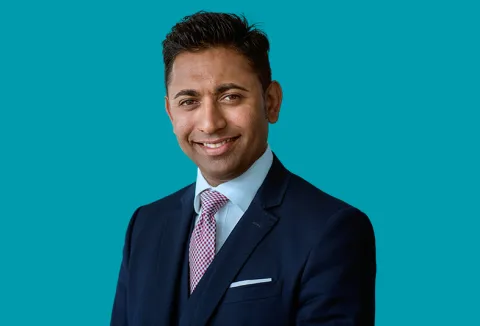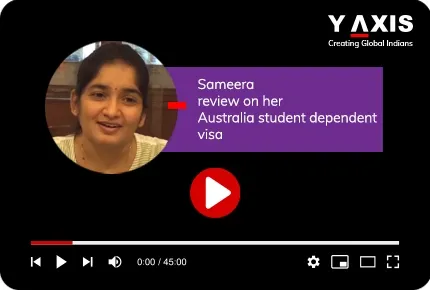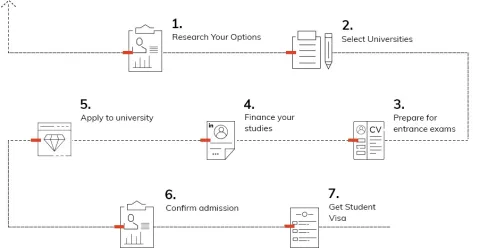Australia is one of the best places for higher studies, and the country attracts thousands of students each year from all over the world. Australian universities provide world-class education, are recognized globally, and research is considered one of the key components of any graduate course. The universities support students who come up with the best research ideas, and scholarships are provided according to the research work. Here are also some other reasons to study in Australia:
- Affordable Education
- Innovative and Abundant Research Opportunities
- Immigration Possibilities
- Exciting Campus Lifestyle
- Healthy and Safe Communities
- Work and internship opportunities for international students while they study
Educational Qualification
- The minimum eligibility criteria to graduate is you have to score at least 60% from a UGC or AICTE recognized university.
Year Back
- The graduation degree has to be completed within the stipulated time with no gap year.
- Example: B.Com is a 3-year degree. The client should have completed it within 3 years and not more.
- Example: Engineering is a 4-year degree. The client should have completed within 4 years and not more.
Backlogs
-
The client should not have more than 10 backlogs in his/her graduation period.
Average Fees
$12,000 to $25,000 per year
$24,000 to $35,000 per year
$7,000 to $10,000 per year
February
July
November
Student Applicant:
-
Students must be over 18 years of age.
-
International students in Australian universities can work on-campus or off-campus for up to 20 hours during university semesters and full-time during breaks, such as the winter or summer holidays, without needing a work permit.
-
International students studying in a program that requires work experience, such as through a co-op or internship program.
Spouse:
- In general, spouses are given the same rights as students already in Australia. Therefore, if a student with an Australian student visa has the right to work, the spouse who comes to join him or her will also have that right.
Description
Australian National University
University of Melbourne
University of Sydney
University of New South Wales
University of Queensland
Monash University
University of Western Australia
University of Adelaide
University of Technology Sydney
University of Wollongong
RMIT University
University of Newcastle
Curtin University
Macquarie University
Queensland University of Technology
Deakin University
University of Tasmania
Swinburne University of Technology
Griffith University
La Trobe University
University of South Australia
Flinders University
James Cook University
Bond University
Western Sydney University
University of Canberra
Murdoch University






Australian student visa
Study in Australia with a student visa. Discover the application process, requirements, and expert tips to successfully obtain your Australian student visa.
Australia Student Visa 2025: Requirements, Documents & Fees
Did you know Australia welcomes over 600,000 international students annually? This makes it the third most popular study destination worldwide. The Australia student visa application might seem daunting at first, but proper guidance can help you join thousands of students who pursue world-class education Down Under.
The Subclass 500 Visa lets international students enrolled in qualifying courses study in Australia. The Australia Student Visa requirements and Australia Student Visa process need careful planning. Each step of gathering documents and meeting financial criteria plays a significant role in your application's success.
This piece walks you through everything about getting your Australian student visa. You'll learn about eligibility requirements, documentation, application steps and post-study opportunities. The information here will help turn your Australian education dreams into reality, whether you're researching options or ready to apply.
» Ready to Study in Australia? Apply for Your Student Visa Now!
Types of Australia Student Visas
Understanding the right student visa is essential for studying in Australia. Here's a brief overview of the main options:
1. Australia Student Visa (Subclass 500)
The Australia student visa system works through a single framework created just for international students. Over the last several years, the Subclass 500 visa Australia has emerged as the main path for students who want to study at Australia's top educational institutions. This visa category optimizes the application process while you retain control of Australia's high educational standards.
What is Subclass 500 Visa?
The Subclass 500 Visa stands as Australia's main student visa category that has replaced all previous versions. Students can stay in Australia throughout their course duration at a CRICOS-registered institution. This visa lets you study full-time in Australian educational institutions - from English language courses and vocational training to university degrees at all levels.
Your Australia student visa duration lines up with your course length and usually extends a few months past your completion date. Students who plan to study temporarily in Australia will find this visa matches their needs, with options to explore more opportunities after graduation.
2. Student Guardian Visa (Subclass 590)
For parents or guardians of students under 18. It allows:
-
Stay for the duration of the student’s course (up to 5 years)
-
Limited study (e.g., English courses up to 20 hrs/week)
Requirements: Be 21+, a relative/legal guardian, and financially capable. No work allowed.
3. Training Visa (Subclass 407)
Ideal for those undertaking workplace-based training. It allows:
-
Training in specific skills or professions for up to 2 years
-
Participation in professional development programs
Requirements: Sponsorship from an approved organization.
Fee: Starts at AUD 415. Secondary applicants may work up to 40 hours/fortnight.
Who needs a student visa in Australia?
Students planning to study in Australia beyond three months must get an Australia student visa. This rule applies to all international students who enroll in:
- English language courses (like IELTS preparation)
- Vocational courses (such as hospitality, construction, business)
- University courses (bachelor's, master's, and PhD programs)
The Australia Student Visa requirements include meeting the Genuine Temporary Entrant (GTE) criteria to show you plan to stay temporarily for study. The e-visa system makes applications more available, and approved education agents can process applications and documents electronically.
Benefits of the Subclass 500 Visa
The Subclass 500 Visa Australia brings many benefits beyond education. Students can work part-time up to 24 hours weekly or 48 hours per fortnight during their course. Part-time work pays around AUD 34.63 per hour, which helps support your studies.
This visa lets you add eligible family members—spouses, de facto partners, and children—when you apply or after approval. Your partner gets the same work rights as you under this arrangement.
Post-study opportunities are another great reason to choose this visa. After finishing your studies, you might qualify for the Temporary Graduate 485 visa. This lets you live and work in Australia for two to four years, based on your qualification level. You need to meet these requirements for the graduate visa:
- Be under 50 years of age
- Have received your first student visa on or after November 5, 2011
- Have held your student visa within six months of applying
The Australia student visa has no restrictions on the number of eligible courses you can study. Multiple extensions might affect your GTE claims, so it's best to pick your courses carefully from the start. Course packages that include multiple courses under one application often work well.
Scope of your subclass 500 visa
The Subclass 500 visa Australia gives you more than just classroom learning privileges. You can make the most of your Australian education when you know your visa rights and stay within the rules.
Your Australia student visa lets you enroll in different types of education programs, from English courses to PhDs. The Commonwealth Register of Institutions and Courses for Overseas Students (CRICOS) must approve all courses. You can choose from:
- English language preparation courses (like IELTS training)
- Vocational and technical education
- Bachelor's, master's, and doctoral university degrees
Work rights are a great benefit of your Subclass 500 visa. Students can work part-time up to 24 hours weekly (or 48 hours per fortnight) during course sessions. Part-time jobs pay around AUD 34.63 per hour, which helps with living costs. Students pursuing a masters by research or higher degrees can work full-time throughout their course.
Your Australia student visa benefits extend to your family too. Eligible family members—spouses, de facto partners, and dependent children—can join your original application or be added later. Your spouse or partner gets similar work rights, which creates extra income sources for your family.
Healthcare coverage is essential. You must get Overseas Student Health Coverage (OSHC) before coming to Australia. This insurance will give a safety net for medical care costs during your stay.
The Australia student visa also makes it easy to extend your education. Australia doesn't limit how many eligible courses you can study back-to-back, unlike other countries. You can combine multiple qualifications under one student visa application and study longer.
After graduation, your Subclass 500 visa opens doors to stay in Australia through the Temporary Graduate 485 visa. This work permit lets you gain Australian work experience for two to four years, based on your qualification. You need to:
- Be under 50 years old
- Have received your first student visa on or after November 5, 2011
- Have held a student visa within six months of applying
The 482 Employer Sponsored visa is another option if you find work with an approved sponsor. Many former students use this path to continue their Australian adventure.
Yes, it is true - your Australia student visa is way beyond the reach and influence of just study permission. This package of rights and chances will improve your educational experience and create valuable career paths in Australia.
Requirements for an Australia Student Visa
Your Australia student visa approval depends on meeting specific eligibility criteria. The Australian government wants to make sure international students can complete their studies and live comfortably. Let's get into what you need before applying for a Subclass 500 Visa Australia.
Academic and English language requirements
Academic requirements change based on your course level. You need a high school education equivalent to Australian Year 12 to study undergraduate programs. Postgraduate courses need a bachelor's degree from a recognized institution.
English language skills are just as important. The Department of Home Affairs sets minimum English requirements that line up with your course demands. You won't meet the Australia student visa requirements without proper English skills, whatever your academic record shows.
Genuine Temporary Entrant (GTE) criteria
The Genuine Temporary Entrant (GTE) assessment is the foundation of the Australia Student Visa application. It shows you're coming to Australia just to study temporarily. Immigration officials look at:
- Your home country situation
- What awaits you in Australia
- How your course helps your future
- Your past immigration records
- Other relevant factors
A strong GTE statement helps your application by a lot. You need to express why you chose Australia over your home country and how your course fits your career plans.
Age limit and health requirements
The Subclass 500 visa Australia works best for students under 50. Some exceptions might apply, but officials assess these case by case.
Your health status plays a vital part in the Australia student visa process. You'll need health examinations to protect public health. You also need Overseas Student Health Coverage (OSHC) before landing in Australia. This insurance covers you throughout your stay and helps with unexpected medical costs.
IELTS and PTE score requirements
The Australia student visa needs specific English test scores based on your visa stream and course. Here are the basics:
- IELTS needs an overall 5.5 score, with no band below 5.0
- PTE Academic asks for 50-58 (same as IELTS 6.0)
- Universities might want higher scores (IELTS 6.5+)
These scores are just the minimum for your visa. Your university might ask for better English skills. To name just one example, many top Australian universities need a PTE score of 65, even though visa rules ask for less.
You might skip the English test if you're from an English-speaking country or studied extensively in English. You'll need proper documents to prove this.
Meeting these requirements doesn't guarantee your visa, but missing any will lead to rejection. A full picture of your Australia student visa documents and meeting all criteria gives you the best chance of success.
Documents Needed for Australia Student Visa
The right paperwork plays a vital role in your Australia student visa application success. Your Subclass 500 visa Australia needs several mandatory documents that show your eligibility and genuine intention to study. Let's get into the paperwork you need to put together.
Electronic Confirmation of Enrolment (eCOE)
The Electronic Confirmation of Enrolment (eCOE) is the life-blood of your Australia student visa application. This official receipt shows your acceptance into a CRICOS-registered course and has key information such as:
- Your course details and duration
- Tuition fees and payment schedule
- Your education provider's details
Your visa application will likely face rejection without the CoE, according to immigration authorities. Your institution will issue this document with a unique identifier needed for your visa form after you accept the university offer and pay the original fees.
Statement of Purpose (SOP)
Your Statement of Purpose is a significant part of the Australia student visa requirements. This document explains:
- Your reasons to choose Australia for education
- Why you picked this course
- Your career goals and their connection to Australian education
- Your home country connections
A well-written SOP makes your Genuine Temporary Entrant (GTE) claims stronger. Immigration officers use this document to check if study is the main goal for Subclass 500 visa applicants.
Financial proof and sponsor documents
You must show financial documents to prove you can support yourself during your stay. The Australia student visa process needs proof of:
- Tuition fee payments
- Living expenses (approximately AUD 21,041 per year)
- Travel costs for you and your family members
Bank statements, education loans, scholarships, or sponsorship letters work as financial evidence. Sponsored students need extra documents like their sponsor's income proof, relationship evidence, and a formal sponsorship letter.
Health insurance and character certificate
You must have Overseas Student Health Cover (OSHC) for your entire stay on an Australia student visa. This insurance takes care of your medical and hospital expenses while studying in Australia.
On top of that, you need character certificates or police clearances from countries where you lived for 12+ months in the last 10 years. These documents confirm you meet Australia's character requirements.
Note that all non-English documents must come with certified translations. Starting the document collection early in your Australia student visa application process will help you get a smooth and successful outcome.
Step-by-Step Australia Student Visa Application Process
Getting your Australia student visa needs a well-laid-out application process. The Subclass 500 visa application experience needs careful timing and attention to detail because Australia wants to ensure only genuine students enter the country. Here's a simple breakdown of the steps.
Choose a CRICOS-registered course
Your first step is to pick a course registered with the Commonwealth Register of Institutions and Courses for Overseas Students (CRICOS). This registration shows that your chosen program meets Australian quality standards for international students. You can choose from:
- English Language Courses - IELTS preparation, general to advanced English
- Vocational Courses - Hospitality, construction, business, sports and fitness
- University Courses - Bachelor, Master, and PhD programs
Your course selection can affect your career prospects and visa eligibility a lot. Take time to research your options before deciding.
Apply and receive your eCOE
After selecting your course, you can apply directly to the institution or through an education agent. The institution will send you a Letter of Offer that shows course details, enrollment conditions, and fees. Read this document carefully and:
- Accept the offer formally
- Pay the required deposit
- Submit any additional requested documents
The institution will give you an Electronic Confirmation of Enrolment (eCOE) once you complete these steps. You need this document for your Australia student visa application.
Create an ImmiAccount and fill the visa form
The next step is creating an ImmiAccount on the Department of Home Affairs website. This online portal lets you:
- Complete Form 157A (student visa application)
- Write your Genuine Student (GS) statement about your study plans
- Provide personal information and course details
- Answer questions about your circumstances and intentions
Your GS statement should explain why you chose Australia and your particular course. You also need to show that you plan to return home after studying.
Pay the visa fee and upload documents
The Australia student visa fees cost about AUD 620 for the main applicant. Family members need to pay extra:
- Secondary applicants over 18 – AUD 1,190
- Secondary applicants under 18 – AUD 390
After payment, upload all required Australia student visa documents including your passport, eCOE, financial evidence, OSHC details, and academic records.
Attend medical and biometric appointments
You might need health examinations at an approved medical facility. Some countries also require biometric collection (fingerprints and photographs). Your application moves to assessment after completing these steps.
The Australia student visa processing time usually takes 4-6 weeks, depending on your nationality and how complete your application is. You'll get an electronic visa linked to your passport when approved, and then you can start your Australian education experience.
Cost of Studying in Australia and Visa Fees
The financial planning of your Australia student visa experience plays a crucial role in your preparation. Your investment in Australian education depends on your program choice and lifestyle priorities.
Tuition fees by course level
Australia student visa holders pay different tuition costs based on their program level. The annual tuition ranges from:
- Bachelor's degrees: AUD 21,000-26,000 (INR 17-26 lakhs)
- Master's programs: AUD 22,000-42,000 (INR 17-42 lakhs)
- MBA/PGDM courses: AUD 23,000-31,000 (INR 19-31 lakhs)
- Doctoral programs: AUD 56,000+ (INR 46 lakhs)
International students can choose technical and vocational courses that cost less than university degrees.
Australia student visa fees breakdown
The current Australia student visa fees amount to AUD 620 for primary applicants. Family members need to pay additional charges:
- Secondary applicants over 18: AUD 1,190
- Secondary applicants under 18: AUD 390
Students must budget for health examinations, biometric collection, and document certification costs. Students applying from within Australia may need to pay an additional visa charge of AUD 700.
Living expenses and financial capacity
Subclass 500 visa Australia applicants need proof of funds to cover living expenses. The Department of Home Affairs recommends AUD 21,041 per year for simple living costs. Here's what you might spend:
- Accommodation and meals: ~AUD 11,800 (INR 9.7 lakhs)
- Mandatory health insurance: ~AUD 720 (INR 59,000)
Students in Sydney and Melbourne (ranked #6 and #5 in QS Best Student Cities) should expect higher living costs than the national average.
Education loans and funding options
Students can fund their education through various sources:
- Education loans from private or public banks that offer student-friendly interest rates
- Scholarships (more than 120,000 available for international students)
- Part-time work (up to 24 hours weekly, with earnings around AUD 34.63/hour)
Australia's medical professionals earn well. Surgeons make an average of AUD 394,303 yearly and anesthetists earn about AUD 386,065.
Post-Study Work and PR Pathways in Australia
Your Australia student visa opens doors to exciting career opportunities in Australia after graduation. The country provides several ways to extend your stay and get valuable work experience that could lead to permanent residency.
Temporary Graduate Visa (Subclass 485)
International students who graduate from Australian universities can live and work in Australia with the Temporary Graduate 485 visa. The requirements are straightforward:
- You must be under 50 years old
- You should have held a Subclass 500 visa Australia in the last six months
- Your first student visa application should be dated November 5, 2011 or later
The visa costs about AUD 1,945. You can stay between two to four years depending on your qualification level. This visa helps students transition smoothly into their professional careers.
Post-study work rights by qualification
The time you can work after studying depends on your qualification:
- Bachelor's degree: 2 years
- Master's degree: 3 years
- Doctoral degree: 4 years
The 485 visa comes with two options: Graduate Work Stream for those who completed courses leading to jobs on the Medium and Long-term Strategic Skills List (MLTSSL), and Post-Study Work Stream for bachelor's, master's, or doctorate graduates.
Pathways to Permanent Residency (PR)
The 482 Employer Sponsored visa gives you another option after your Australia student visa, besides the 485 visa. You'll need:
- A job offer from an approved employer
- Your job must be on the Short-Term Skilled Occupation List
- A minimum yearly salary of AUD 53,900
- Your employer must agree to sponsor your visa
Many former students take this path to continue their Australian trip and work toward permanent residency.
Bringing dependents on student visa
Your Australia student visa lets you include eligible family members when you first apply or later. Your spouse, de facto partner, and children can join you in Australia. Partners get similar work rights as primary visa holders.
Extra fees apply for dependents:
- Secondary applicants over 18: AUD 1,190
- Secondary applicants under 18: AUD 390
How to apply for student visa Australia?
The Australia student visa application has become more optimized with electronic systems. Students worldwide can now complete their Australia student visa process online.
Start by creating your ImmiAccount on the Department of Home Affairs website. This online portal will be your central hub for visa-related activities. The Student Visa (Subclass 500) option should be selected from available visa categories.
Your application needs careful attention to detail. The immigration office might flag any inconsistencies between your application and supporting documents. Your personal information must match exactly with your Electronic Confirmation of Enrolment (eCOE) details.
The system will direct you to upload your Australia student visa documents after you submit your personal information. High-resolution color scans work best. Clear file names will help immigration officers review your application efficiently.
The e-visa system has reduced Australia student visa processing time significantly. Students from India can work with thirteen approved education agents that process visas electronically and attach supporting documents digitally. This approach leads to quicker decisions.
You should also find an approved panel physician near you for your health examination. The system generates a referral letter with a HAP ID that you'll need at your appointment. Quick completion of this step helps avoid delays in processing.
The system sends an acknowledgment and application reference number after submission. You can track your Australia student visa application status through your ImmiAccount. Quick responses to any requests for additional information are essential.
The immigration office sends visa decisions through email rather than physical mail. Your genuine student status requires you to notify authorities about any changes to your planned course or institution.
Final Thoughts on Your Australian Study Experience
Getting your Australia student visa needs proper planning and close attention to detail. In spite of that, studying in Australia is worth every bit of effort. Australian world-class universities, great lifestyle, and post-study work opportunities draw hundreds of thousands of international students each year.
The Subclass 500 visa Australia opens doors beyond just education. Without doubt, quality academics paired with part-time work rights and detailed health coverage create perfect conditions to grow both personally and professionally. On top of that, you can bring family members with you to keep your support system strong while you study.
This piece has shown you the visa rules, needed documents, application steps, and costs. So you now know what it takes to build a strong visa application that shows you plan to study in Australia temporarily.
Note that meeting the Australia student visa requirements marks just the start. Your path after graduation could lead to further studies, work experience through the 485 visa, or permanent residency. Your long-term goals should shape your education choices.
Your Australian student visa unlocks life-changing education and global career paths. The application might look tough at first, but breaking it into smaller steps makes it doable. Start your preparations early, collect documents step by step, and ask for help from education agents or your chosen school when needed.
Your Australian education experience is ready to begin—research CRICOS-registered courses that match your career goals and start working on your Subclass 500 visa application right away.
FAQs
What is the Subclass 500 Student Visa for Australia, and who is eligible?
How much does it cost to study in Australia on a student visa?
Can Indian students work while studying in Australia?
What are the post-study work options after completing studies in Australia?
What are the financial, English language, and health cover requirements for an Australian student visa?
